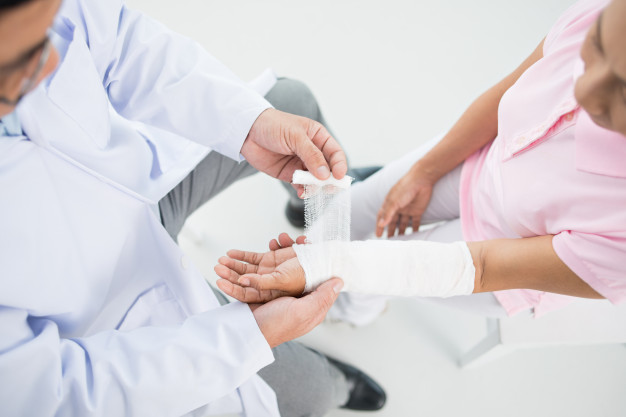 The wrist itself is not a bone, but a joint connecting the hand and the forearm. A wrist fracture can impact daily life for a long period of time. There can be many sources of wrist pain, ranging from sudden onset (a fracture after a fall or trauma) to repetitive stress leading to arthritis or carpal tunnel syndrome.
The wrist itself is not a bone, but a joint connecting the hand and the forearm. A wrist fracture can impact daily life for a long period of time. There can be many sources of wrist pain, ranging from sudden onset (a fracture after a fall or trauma) to repetitive stress leading to arthritis or carpal tunnel syndrome.
Owing to the complex architecture of the bones, muscles and ligaments in the wrist and hand, healing can take a while. It is important to rest and restrict motion to allow the injury to heal and to prevent displacement of bone fragments and other complications.
Return to Function
 Given the importance of the wrist in daily activities, the objective of physical therapy is to help regain full motion of the affected wrist. Physical therapy can also help reduce swelling, control pain, improve strength, improve balance and regain independence, especially in older patients.
Given the importance of the wrist in daily activities, the objective of physical therapy is to help regain full motion of the affected wrist. Physical therapy can also help reduce swelling, control pain, improve strength, improve balance and regain independence, especially in older patients.
Wrist fractures are typically treated by applying a cast that holds the wrist in place, provides protection from movement and helps reduce pain. In some cases, surgical correction may be required. Once pain and swelling is reduced, the objective of the healthcare team changes. The new priority is joint range of motion and restoration of muscle strength. This is where physical therapy plays an important role.
Prevention is Better than Cure
You can’t stop unforeseen injuries from happening. However, these simple tips will reduce your risk of injury (or re-injury) in the wrist:
- Build bone strength. Get adequate amounts of calcium – at least 1,500 milligrams a day for adults –and vitamin D to help prevent fractures. Talk to your doctor and ask for advice on which supplement is best for you.
- Use protective gear for athletic activities. Wear wrist guards for high-risk activities such as football, snowboarding and rollerblading.
- Prevent falls. Falling forward onto an outstretched hand is the cause of most wrist fractures or sprains. To help prevent falls, wear well-fitted shoes. Remove home hazards. Light up your living space. Install grab bars in your bathroom and handrails on your stairways if necessary.
 Pay attention to ergonomics. There are tons of devices to help improve the ergonomic setup of your work/home office. Ergonomic keyboards can help take the stress off your wrists when you’re typing. The height of your chair and the position of your monitor relative to your head and neck will affect the angle of inclination of your wrist and entire upper body.
Pay attention to ergonomics. There are tons of devices to help improve the ergonomic setup of your work/home office. Ergonomic keyboards can help take the stress off your wrists when you’re typing. The height of your chair and the position of your monitor relative to your head and neck will affect the angle of inclination of your wrist and entire upper body.
If you are experiencing pain from a wrist injury, we can create a customized treatment plan that will reduce pain, restore mobility and facilitate recovery. Call us today to ensure a quick and speedy recovery.
 Pay attention to ergonomics. There are tons of devices to help improve the ergonomic setup of your work/home office. Ergonomic keyboards can help take the stress off your wrists when you’re typing. The height of your chair and the position of your monitor relative to your head and neck will affect the angle of inclination of your wrist and entire upper body.
Pay attention to ergonomics. There are tons of devices to help improve the ergonomic setup of your work/home office. Ergonomic keyboards can help take the stress off your wrists when you’re typing. The height of your chair and the position of your monitor relative to your head and neck will affect the angle of inclination of your wrist and entire upper body.